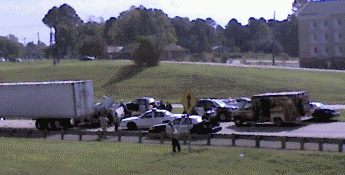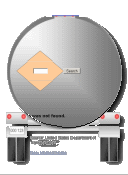
 |
 |
 |
| Nosy Motorist Home Follow @NosyMotorist |
What is HAZMAT? What are Hazmat Placards? Thursday, February 5, 2015 By NosyMotorist First: What is Hazmat? Hazardous Materials, also known as Dangerous Goods, are substances in the form of gasses, liquids and solids which pose a threat to human life, damage to property, or harm to the environment if not properly handled or contained. Labelling was undertaken by materials producers and transporters largely as an insurance initiative to attenuate liability following a series of high-profile incidents in the late nineteenth century. The American Railroad Association, a trade organization, created an office in 1907 called the Bureau of Explosives to inspect and regulate the labelling and transport of dangerous goods, specifically explosives. Around the world, generally labels were in the local language, with a few symbols, such as the flame for flamable or the ancient skull and crossbones for poisonous. Where did the numbers come from? Starting in the 1950s, regulators began to suggest standard markings as these materials began being traded and transported internationally, especially in the emerging European market. The United Nations Economic Commission for Europe (UNECE) created a list of what they called Dangerous Goods, and assigned each material a four-digit number starting with 0004 and going up. The highest number is currently 3496. These are known as U.N. numbers. Possibly because all the numbers under 1000 pertain to explosives, the U.S. only adopted 1001 and higher from this list in their own numbering scheme, but added another series of numbers between 8000 and 9500 to describe materials not covered specifically enough in the U.N. numbers. These are known as N.A. numbers because they are almost exclusive to the U.S. and Canada. What exactly is a placard? Having the the data to describe hazardous cargo and materials is only half the task; it must be displayed in an unambiguous format that cannot be confused with other labelling and markings. Because of this, hazmat placards are separate from the containers, vehicles and vessels they are attached to. They are diamond shaped, like other safety-related signs on roadways and in the workplace. Their color is related to the most significant hazard they present. For example, while gasoline is poisonous, its flamability poses the most immediate threat, so gasoline placards are bright red.   Where are HazMat Markings used? HazMat markings are placed on all vertical sides of their associated container or vehicle in accordance with United States Code of Federal Regulations (CFR) 49.172.101 and enforced by the federal Department of Transportation, state and local law enforcement agencies. CFR 49.172.101 is harmonized by international agreements so that markings on cargo originating in the U.S. will be compatible with those outside the U.S.A. There are several basic classes of HazMat in common use: Also, see our Hazmat Code page 
References:
o United States Fire Administration Hazardous Materials Guide for First Responders (Search from the HSDL homepage -- no direct link) o United Nations Economic Commission for Europe (UNECE) o UNECE UN Codes o U.S. DOT Emergency Responder's Guide (pp 6-24) |
NEW! Perpetual Calendar Choose any year, month. |